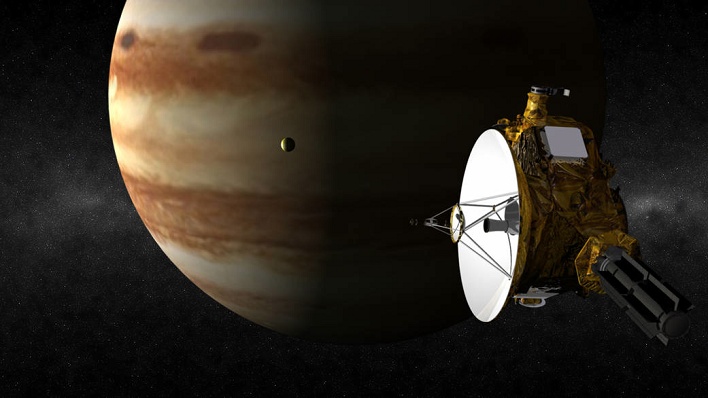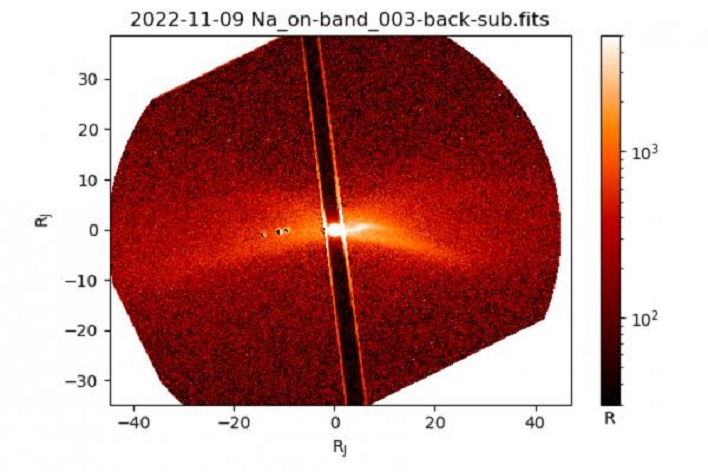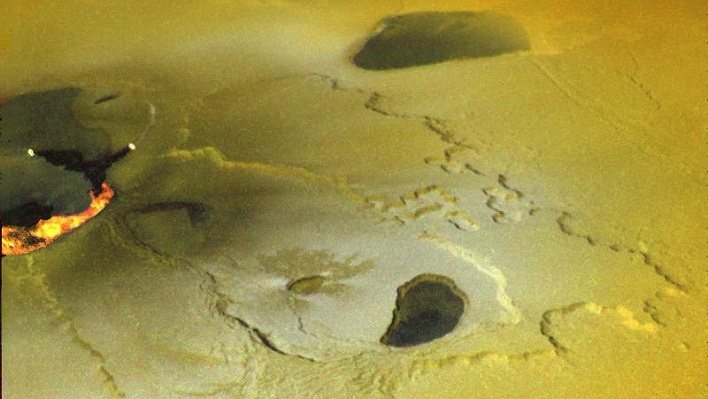A Huge Volcanic Outburst Is Spotted On Jupiter's Inner Moon And NASA Is Excited

Jupiter's moon Io is no stranger to volcanic eruptions. The first volcanic eruption on Io was photographed in 1979 about twelve hours before NASA's Voyager 1 made its closest approach to Jupiter. At least four eruptions have been identified in Voyager 1 pictures and more could still be found with a closer analysis, according to NASA. Now, the largest volcanic eruption detected as of yet on Io has been observed, and it could have "profound implications" for NASA's Juno mission.

The coronagraphic technique that was used to observe the volcanic eruption dims the light coming from Jupiter to enable imaging of faint gases near the brightly lit planet, according to a post on the Planetary Science Institute's website. An increase in the brightness of two of the gases, sodium and ionized sulfur, was observed between July and September of 2022 and lasted until December 2022. The ionized sulfur was not nearly as bright in this particular outburst as previously seen in others.
"This could be telling us something about the composition of the volcanic activity that produced the outburst or it could be telling us that the torus is more efficient at ridding itself of material when more material is thrown into it," explained Morgenthaler.

"Juno measurements may be able to tell us if this volcanic outburst had a different composition than previous ones," added Morgenthaler.
The Juno spacecraft launched aboard an Atlas V-551 rocket from Cape Canaveral, Florida, on August 5, 2011. It arrived at Jupiter on July 4, 2016, after a five-year, 1,740-million-mile journey. Juno is set to investigate Jupiter and its moons through September 2025, or until the spacecraft's end of life.
For those that dream of making discoveries such as the one by IoIO, Morgenthaler stated, "One of the exciting things about these observations is they can be reproduced by almost any small college or ambitious amateur astronomers. Almost all of the parts used to build IoIO are available at a high-end camera shop or telescope store."

